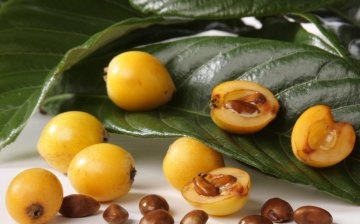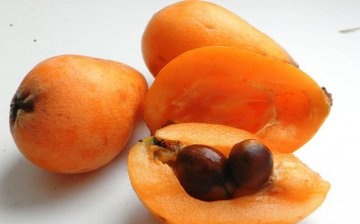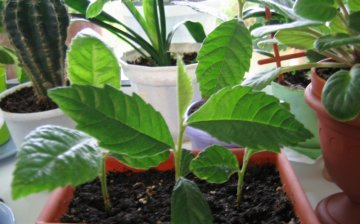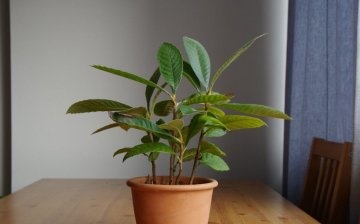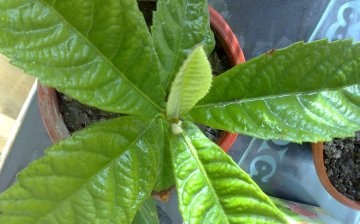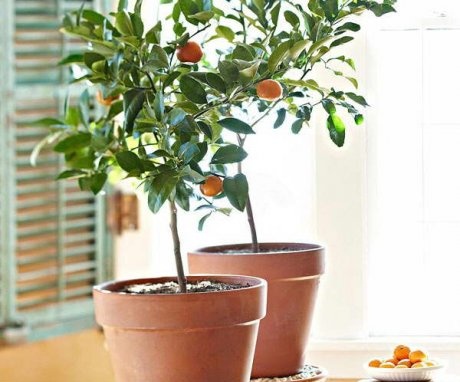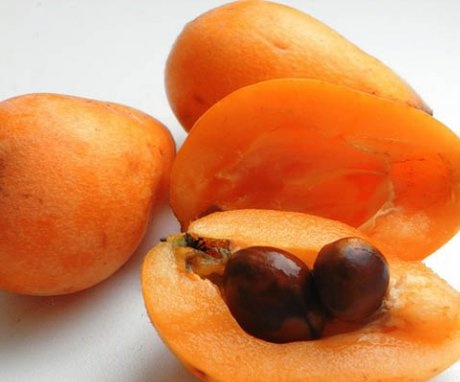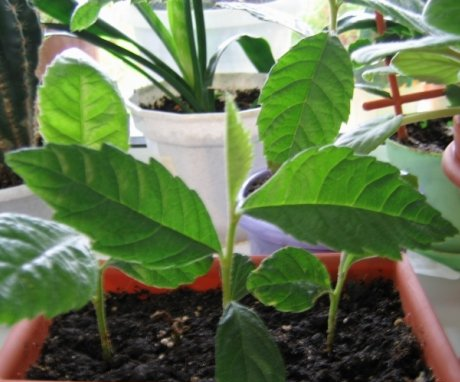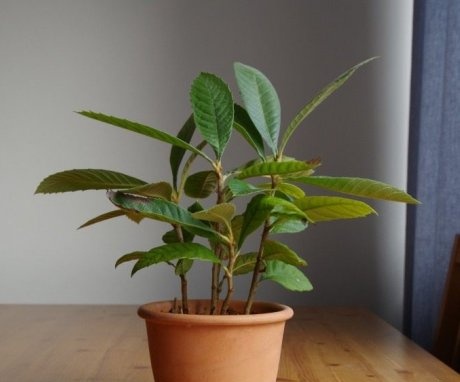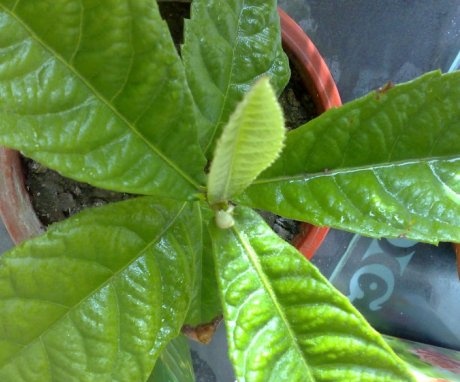Medlar: how to grow a plant at home?
Medlar Is an evergreen plant of the Rosaceae family. Previously, it was very popular in subtropical countries, but gradually the interest in it faded away. Now the medlar is popular with flower growers and lovers of exotic plants.
Content:
Description and types of plants
Medlar in natural conditions sometimes reaches 8 meters. In an apartment, it can grow up to 2 m. The leaves are leathery, oval, oblong, up to 20 cm long and 7 cm wide. The leaf is shiny glossy above, velvety below. Pubescent shoots.
The flowers are similar to those of a rose hip. White petals surround a large number of stamens, densely located on the receptacle. They self-pollinate, but artificial pollination increases yields.
There are about 30 species of this plant. Most often, loquat is grown in our conditions:
- Japanese (lokva). It is grown in natural conditions in China and Japan. There are more than a thousand varieties, including Champagne, Thales, Tanaka. The Japanese medlar is capricious and requires high humidity and temperature to grow. Blooms in September-November. The fruits are orange, round or oval. They are arranged in clusters of up to 8 pieces. Inside each one there are from 3 to 8 seeds, brown, slightly flattened. The fruit tastes like cherry and pear at the same time, with a noticeable sourness. It tolerates a drop in temperature to -23 ° C, but at the same time the above-ground part of the tree dies. Bears fruit only in warm winter conditions. Therefore, it is more advisable to grow it at home.
- Germanic (Caucasian). It is considered an ornamental shrub or tree. Suitable for cultivation in southern regions, it can tolerate frosts up to 20 degrees. The tree can grow up to 8 m, but usually reaches 3 m. The leaves of the medlar in the fall change color to burgundy. Single flowers with white petals and a red center bloom in May, fruits form in October or November. Their skin is yellow-brown. They are similar in size to an average apple, quite firm, their taste is not very pleasant, sour. But after the fruits have lain in the basement for up to 3 months, they ripen. Can be put in the freezer. After defrosting, they acquire a flavor that combines apple and quince, to which the fruits are similar in appearance. Thawed apples shrink and shrink. Some varieties taste like sweet cherries. The fruits of both types are very aromatic.
Reproduction methods
Medlar propagate:
- Seeds... Seeds germinate in natural conditions in 2-3 years. This is not suitable for gardeners, so they figured out how to speed up the process. Remove from ripe fruits, wash. Dry for 3 days. Violate the integrity of the seed cover by rubbing them with a file. The seeds are immersed in water for a day. Those of them that have surfaced to the top are thrown away. The rest are immersed in a solution of hydrochloric acid, dissolving a teaspoon in a liter of water, for 3 hours. Washed out. This procedure softens the hard shell and allows the seed to emerge in the spring. After such treatment, the seeds can be planted in the ground or sent to stratification... Planted in pots, one in each.If you plant several, then when transplanting, their root system will be damaged. Fruits with this method of reproduction can be obtained only after 5 years. Seeds can be sown outdoors. In the southern regions, this is done before winter, so they will be stratified in the ground. Seedlings will appear in the spring or next year. In the middle lane, seeds are sown in the spring after stratification in a refrigerator or cellar. The first year the seedlings are covered from frost.
- By cuttings... To propagate the medlar by cuttings, cut one of the branches into pieces about 15 cm long, or take only the top. The handle must have at least 2 buds. The lower leaves are cut off. The cut site is treated with crushed charcoal. Planted in pots, covered with glass jars. Keep the soil moist. At a temperature of about 26 ° C, the roots will appear in a month.
- Air layering. This is how the medlar is propagated to get fruits in a year. The bark ring is removed with a knife. The plastic bottle is cut lengthwise, secured with tape near the cut. Fill the bottle with earth, which is moistened regularly. After 2 months, roots will appear in the cut area. When the cuttings grow and begin to grow, it is cut off and transplanted into a separate pot.
The last two methods allow you to preserve the varietal properties of the plant. When propagated by seeds, there is no such guarantee.
Planting medlar
Medlar is grown in neutral soil. This can be seedling soil or self-prepared soil. Mix:
- Sod land
- Sheet soil
- Compost
- Coarse sand
Sod land is taken most of all, 4 parts, leaf is 2 times less. A little sand is added to allow water to pass through the soil and compost to replenish nutrients. The place for growing medlar is chosen light. There it will bloom better. It can be a southern or southeastern window sill. A drainage layer is placed on the bottom of the pot. Prepared soil is poured on top. The seeds are immersed in it to a depth of 3 cm. Cover with glass to create high humidity.
Medlar does not like either overdrying or stagnant moisture.
After the emergence of seedlings, the pot is hidden from the sunny windowsill. For young shoots, exposure to sunlight will be harmful. They are taken out in the sun after the plant gets stronger and a few pairs of leaves are released. In the garden, the medlar is planted after it reaches a height of 30 cm. The place for it is chosen where the groundwater is at least 1 m from the soil surface.
Care advice
Maintain soil moisture by pouring settled water over it. In the summer they are watered often and abundantly. Make sure that the soil never dries out. Do not spray with water. Fertilizing with mullein infusion, diluted in a ratio of 1:10, young plants are carried out every 3 weeks, adult trees are fertilized up to 3 times per season. Can be used complex mineral fertilizers.
The soil is periodically loosened to improve air access to the roots. Do this once a week. The temperature during the growing season cannot be lower than 15 ° C. In the summer, the plant, together with the pot, can be taken out into the street, into the garden. During the rest period, the medlar is brought into the house or installed on a glazed balcony. But the temperature there should not fall below 5 ° C. The medlar installed on the balcony is not watered. Reduce watering of plants that are in the apartment.
As soon as the medlar sprout appears on the surface, they are determined with the shape of the future plant.
To make it grow in the form of a bush, after the appearance of the third pair of leaves, pinch off the top. This leads to the growth of side shoots. Medlar is also grown in the form of a tree. In this case, cut off the lower side shoots. The cut off live parts can be used for rooting. The branches that bear fruit are cut off immediately after harvesting. This is necessary so that the plant can lay new flower buds in time. Dry and damaged branches are regularly removed.
Transplant and use
It is necessary to replant a young medlar tree every year. They do it in the spring. They are transplanted by the transshipment method so as not to damage the delicate root system plants:
- A new pot is prepared, the diameter of which is 5 cm larger than the previous one. It must have a large drainage hole.
- A layer of expanded clay, fine gravel or other small pebbles is covered.
- Pour some earth on top. Carefully remove the plant from the previously watered pot, transfer it to a new one.
- All voids are covered with earth. Watering. Take in the sun for a few days.
A plant that is more than 5 years old is transplanted less often, once every 4 years. But at the same time, every year they remove the top layer of the earth and replace it with a new one. Medlar is quite disease resistant. But for prevention, 2 times a year the medlar planted in the garden is treated with Fitoverm, Lepidocid and Insegar.
The fruits of the medlar have a positive effect on the work of many organs and systems.
Eat raw or processed. Used in the treatment of urolithiasis. The fruits help in the treatment of the digestive system. Alcohol tincture facilitates breathing in asthma, stops coughing in bronchitis. Fruits contain vitamin A, therefore they are natural energetics.
From the leaves of the medlar, tinctures are prepared that stop bleeding. They are able to remove antioxidants and toxins from the body. Gargling can help with colds.
More information can be found in the video:



